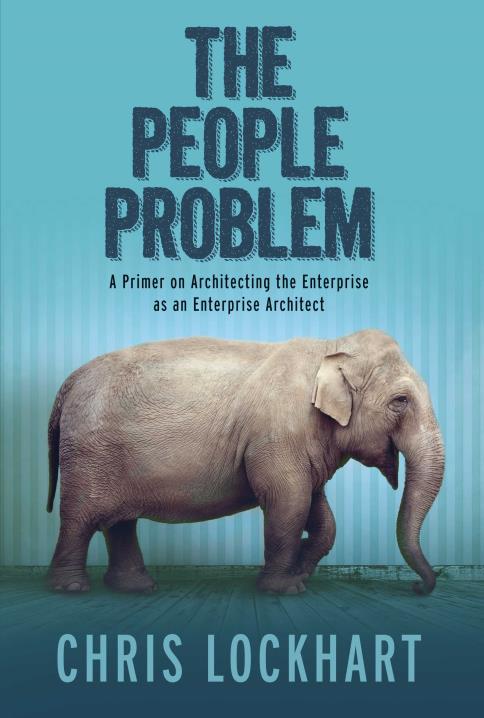Step One, Cut a Hole in the Box
We’re all about cloud these days, aren’t we? Cloud this, cloud that, cloud up in here, up in there. Like so many paradigm shifts before it, there is much to recommend about changing how we create, deploy and offer our services and products to customers. Of course, if it was all just that good, there wouldn’t be an entire consulting industry built around avoiding the pitfalls of cloud. Reality, as someone once told me, is only as ideal as you are capable of making it. Since we’re human, that means it is never ideal, usually mediocre and often disastrous. Why should we expect our IT decision making around cloud to be any more ideal than we are capable of making it? To be more blunt, why should we suppose that “cloud” would do us any good whatsoever if we have a generally lousy history of performance in IT?
Too Many Notes
If one were to suspend disbelief for a moment, it could be imagined that cloud as both a technology platform and industry practice could solve world hunger. It is the thing we all must be doing and it is the thing that will grant us competitive edge and it is the thing that will bring us success if done correctly. It isn’t exaggeration to suggest that if cloud didn’t come into being of its own accord, like some sort of technological immaculate conception, we would have had to create it just to keep our businesses solvent.
We are led to believe that cloud, and it’s associated practices, are a belief system. A religion of agile responsiveness, of massive scalability, of instant deployability. Without it, we are unfulfilled, adrift in a sea of confusing, cacophonous, unresponsive and inflexible enterprise systems. The only true path to business agility is cloud and cloud is the only true path to enlightenment.
To that end, we are bombarded by buzzwords and promises. Every product in the IT cosmos is rebranding (or has rebranded) in a truly cloudy fashion. Everything old is new again, this time with a much more ambitious, meteorological bent. The religion of cloud is also a science. It has to be done the “right” way. If it isn’t, well, then you’re just plugging along as you were since the days of SOA, aren’t you?
There are, to paraphrase Austrian Emperor Joseph II, too many notes. That is, there are too many words, too much noise, too much confusion and contradiction and nonsense bundling new offerings together that are then resold as cloud solutions. The real meaning, if there ever was one, is lost in the mess. After all, if cloud is everything, then isn’t it nothing at the same time?
The Luddite Rises
But Chris, cloud computing offers companies a real path to reduction of operational cost, a means of improving responsiveness and of opening new revenue streams. Yes, fine. I get it. Sophistication in how we deliver our services is usually desirable if it reduces our overhead and improves our customer satisfaction. But that isn’t what the cloudy industry is about. Let’s be honest, cloud is often just a vehicle for vendors to be hip and relevant in peddling products and services. Back in the day, everything was a web service. Or it was a portal. Or it was a bus. Or it was a grid or an engine or a factory. These and others are merely marketing words devised by a well-placed finger in the breeze and intended purely for the purpose of obscuring reality, of mitigating the need for us to actually think and produce solutions that address the business problem at hand. It is a means to sell software or hardware or services.
Cloud isn’t a product. It isn’t software. It isn’t hardware. It isn’t services. It is an approach to doing what we’ve always done, trying to solve business problems. But even beyond that, it is an approach that requires us to rethink some of our basic business models. How do we innovate? How do we deliver new or existing services in an easily consumable fashion? How do we charge for that? How do we measure and meter for usage of those products or services? Show me the cloudy product or appliance or middleware that solves these problems with a click and I’ll show you a cloud in a box. An empty box. A oversold box full of vacuous promises and vapid conclusions about how to run IT.
Prefixing a technology or service with “e-” or “i-” doesn’t instantly make it better at its professed role. Likewise calling something a cloud solution doesn’t instantly impart it with a magical ability to solve a business problem. If it gives us new capabilities to address that business problem, then perhaps it is useful. If it prods us to address and reform long ignored pain points in our business model, then so much the better. But a cloudy product, no matter how slick, takes the place of thinking. If corporate IT isn’t about thinking, about solving and challenging and changing, then I’m not sure why we bother at all.
The Forecast for Today: Partly Cloudy
Having spent many years involved with cloudy initiatives I’m justifiably jaded. The parade of vendors and products, of promises and proposals, of definition and redefinition of what cloud “is” and “isn’t” has left me with a rather sour taste of it all. If cloud is mere virtualization, data center optimization and application re-hosting, then okay. Let’s call it that. If it is a refactoring or revising or rebuilding existing applications to run in a different manner so as to extract operational efficiencies or potentially new market opportunities, then let’s simply call it as it is: a new means of doing what we’ve always been doing albeit with possible improvements in how we do it. If it is about replacing legacy systems with a new, modern, web-friendly, device-friendly and consumer-friendly system, then why not just call it the normal routine business of IT? Isn’t that what Information Technology is all about? Aren’t we about improving the solutions provided to our business with the goal of increasing revenue or reducing cost? Why the mumbo-jumbo marketing jargon cast as end-all, be-all new wave way of living? As Andy Samberg and Justin Timberlake taught us, the thing in the box may simply be the same thing we’ve always used albeit packaged differently.
Cloud is What Cloud Does
Cloud doesn’t give us the capacity to think better. It isn’t a boxed solution for every business problem. Anything ‘out of the box’ can reasonably be assumed to offer nothing of the sort. Does my data come in the box? Is hands-free integration in there someplace under the foam peanuts? Is my need to relate to and interface with my customers obviated by the magic gonkulator in the box? What exactly does that cloud product or service provide that I couldn’t do if I put some thought and effort into it? In fact, why bother to run my business at all if the cloud in a box can do it for me?
It’s time we stopped and thought a bit about why this insidious buzz word is taking our world by storm. Is it a harmless marketing term used by vendors and analysts to encourage IT spending? Big deal then, we’ve seen these sorts of things before. Is it a pathetic attempt to be hip and current by the vendors? Sure, okay, no worries there so long as we’re on our guard and bring a healthy dose of skepticism to the party. But if it is a well targeted thrust at the innate laziness of mankind wherein we seek that work-free and thought-free solution in a box, well then, I’m afraid we need to call it out as meaningless, over-hyped and ultimately irrelevant. It can’t think for us.
Call me in 5 years and let’s talk about how relevant “cloud” is to your daily life in corporate IT. I wager we won’t even be using the word in the same transformational sense we use it today. It will have become as “services” is to us. A part of how we think about our work as we set about solving business problems. In 10 years I bet we will laugh with derision at the notion that anything could be sold as ‘cloud’ in any way, shape or form.


